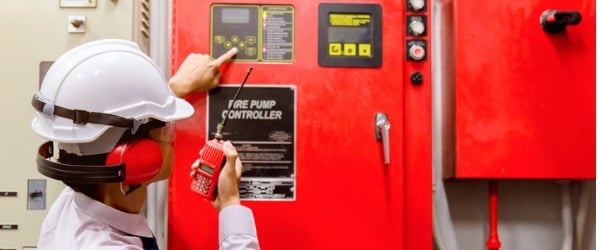EU Fire classification of construction products

We’ve just published a tracked changes version of part one of the European standards on classifying how construction products react to fire. What does that mean for users? This blog post explains.
BSI has newly published: BS EN 13501-1:2018 - TC Tracked Changes. Fire classification of construction products and building elements. Classification using data from reaction to fire tests. This standard provides the reaction to fire classification procedures for all construction products, including products incorporated within building elements.
Products are considered in relation to their end-use application, and the standard covers three categories which are treated separately, namely: construction products, excluding floorings and linear pipe thermal insulation products; floorings; and linear pipe thermal insulation products.
This is a tracked changes version of the 2018 standard, which in turn is a revision of BS EN 13501-1:2007+A1:2009. “Tracked changes” is simply that. Users, in fact, get the whole standard twice over in one document: at the front, every addition to the 2009 version is highlighted in green, and every deletion is highlighted in red. The second half of the document consists of an un-highlighted version of the 2018 standard.
What users should know
The standard was prepared to support the second essential requirement in the EC Construction Products Directive (89/106/EEC) as detailed in the Interpretative Document Number 2: Safety in case of fire (OJ C62 Vol. 37).
Background information on the Commission Decision regarding the classification of the reaction to fire performance of construction products is given in Annex A (classifying how construction products react in response to fire).
The European Commission has drawn up a list of products which, under specified conditions, can be considered to be class A1 without testing. This information is given in the Commission Decision 96/603/EC (OJ L 267 19.10.1966 p23) as amended by 2000/605/EC (OJ L 258 12.10.2000 p36) and 2003/424/EC (OJ L 144 12.6.2003 p9).
Additionally, there is a procedure by which certain products can be assigned a particular fire classification without the need for testing. Such products have a well-established reaction to fire performance and have been agreed by the Standing Committee on Construction.
Agreements relating to such products which may be “classified without further testing” (CWFT) are published in the Official Journal of the EC and are listed on the Nando-CPD database on the EC website (http://europa.eu.int/comm/enterprise/construction). The classification is split into three parts, the main classification, the smoke classification, and the flaming droplet classification.
How the classifications work
The main part of the classification is its letter – A1, A2, B, C, D, E and F. A1 (Non-combustible) is the highest level of performance, with F the lowest performance level (No performance determined).
Flooring materials and linear pipes thermal insulation products are classified according to the same classes A1, A2, B, C, D, E, and F followed by the abbreviation ‘fl’ flooring and ‘L’ linear pipe thermal insulation products. Products classified in A1 and A2 classes are non-combustible materials and from B to F are combustible materials in ascending order.
There is a smoke classification of s1, s2 or s3. s1 is the highest level of performance and s3 is the lowest performance level. There are no smoke requirements for Class E products. There is a classification of flaming droplets of d0, d1 or d2. d0 is the highest level of performance and d2 is the lowest performance level. There is no flaming droplet requirement for floorings.
What’s changed?
This standard was revised in 2018 to bring it up to date. As well as editorial corrections it now includes the reaction to fire classification procedure for linear pipe thermal insulation products. In addition, the definitions for fire performance, fire scenario, net heat of combustion (PCI), heat release and sustained flaming have been expanded, as have Clause 11.2 Class F and 13.2 Class FL.
This important document should be used by anyone with an interest in producing material or products that need to resist fire – or where a product’s ability to resist fire needs to be known.


